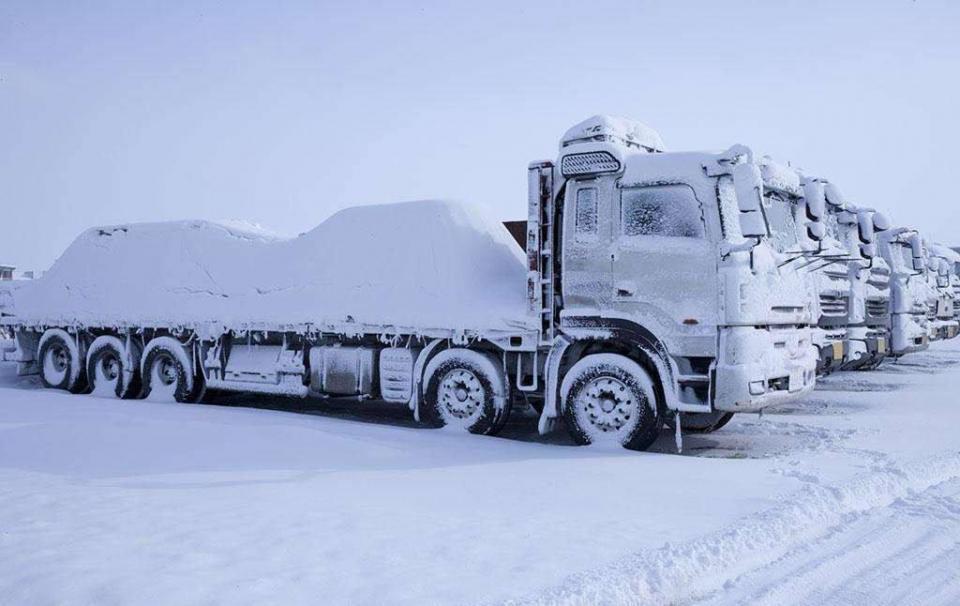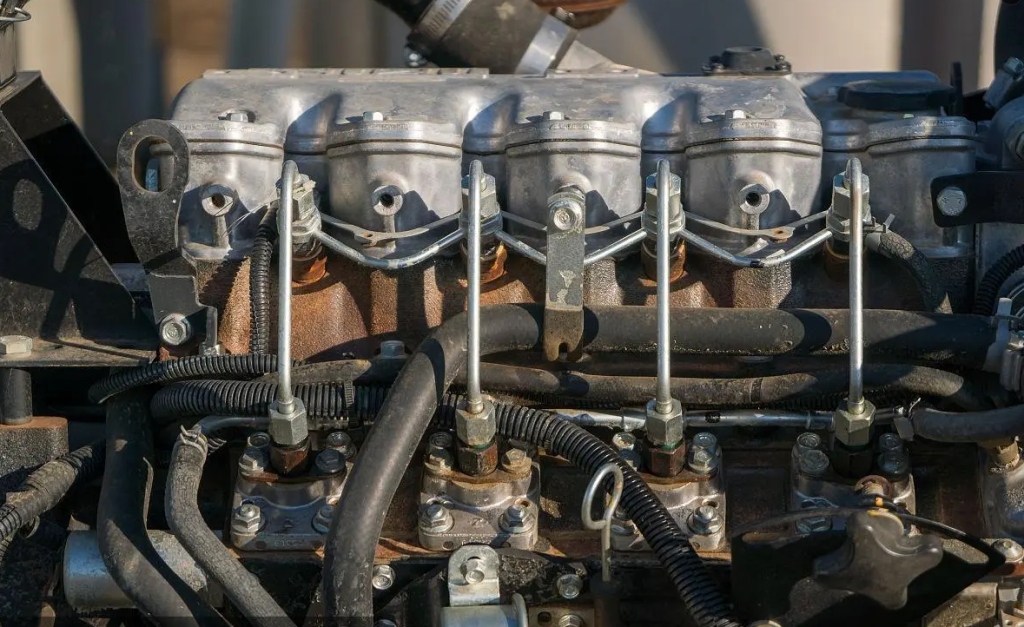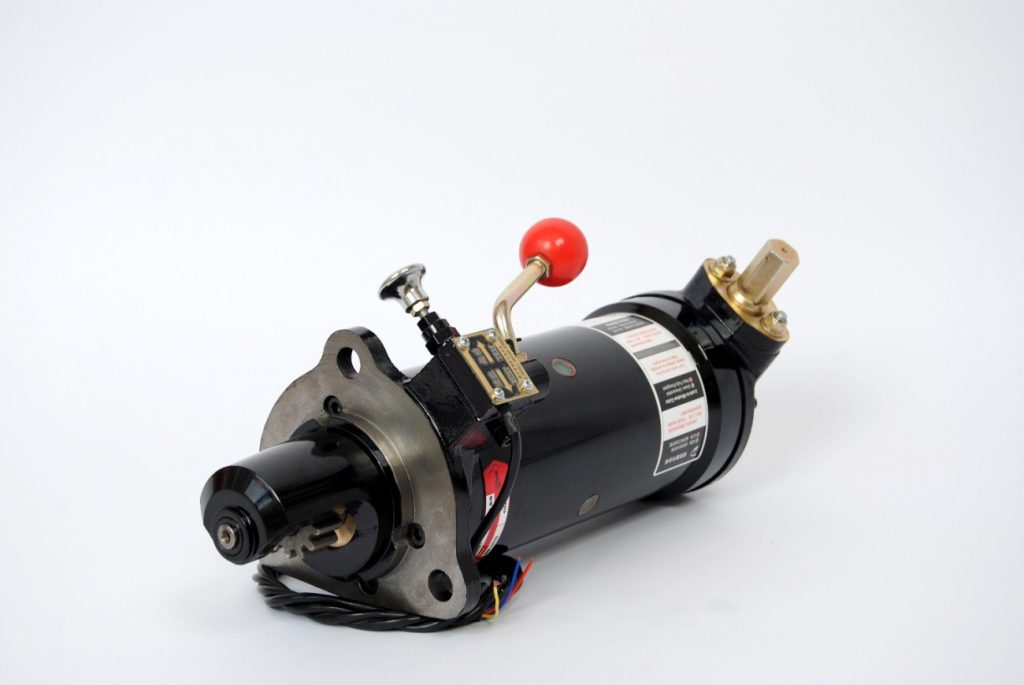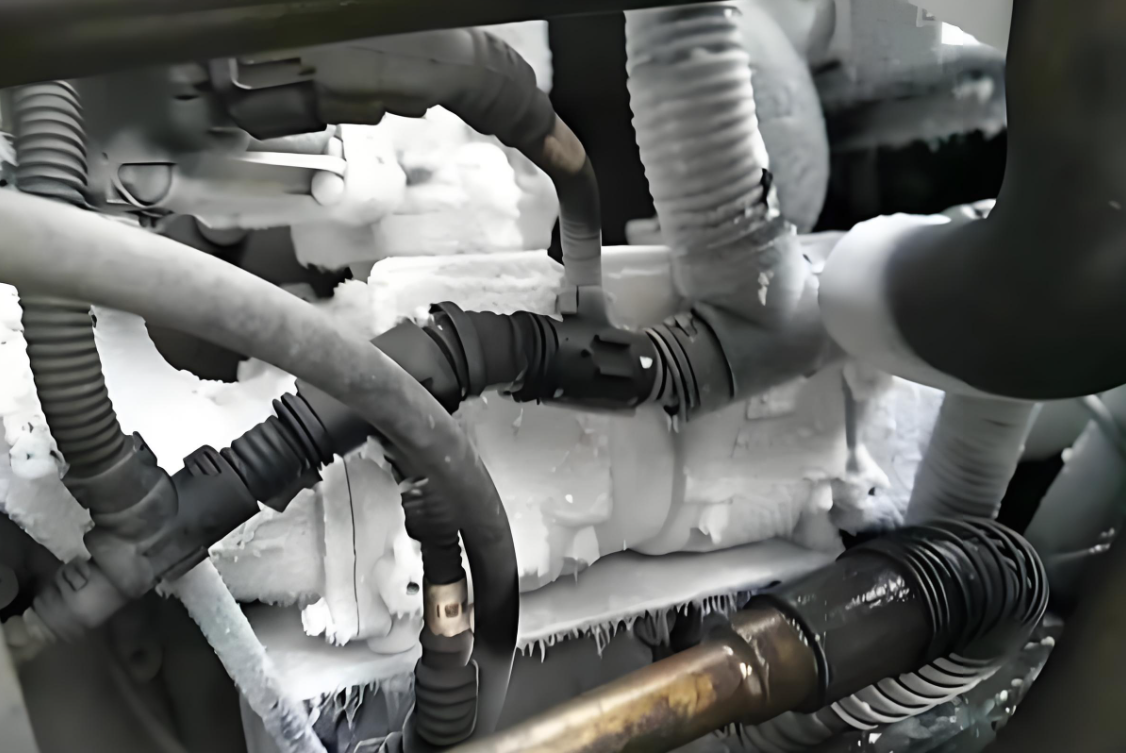As temperatures drop, starting a diesel engine becomes a challenging task. Despite being well-regarded for their durability and efficiency, diesel engines do have some quirks in cold weather.
In cold weather, engine oil can thicken, battery performance can decline, and starting system failures may occur. How to start diesel engine in cold? In this article, we’ll outline effective strategies and tips for starting a diesel engine in cold weather. Wondering how? Let’s dive in!
Part 1. Why Are Diesel Engines Hard to Start in Cold Weather?
Diesel engines are difficult to start in cold weather, mainly due to the following factors:
1. Fuel Gelling
In low temperatures, diesel fuel can easily gel and form waxy deposits. These waxy deposits can block the fuel filter and fuel lines, reducing fuel flow and causing insufficient fuel supply, which affects engine starting.
2. Increased Oil Viscosity
Similarly, in cold weather, the lubricating oil in a diesel engine becomes thicker, which increases friction among its internal components. This also puts a heavier load on the starter motor, making the starting process more challenging.

3. Reduced Battery Performance
In cold weather, the chemical reaction rate in a battery decreases, reducing its cranking current. As a result, the battery’s power is insufficient, and the starter motor does not receive enough power to start the engine.
4. Frozen Injectors & Coolant
If the antifreeze concentration of the coolant is insufficient, it can freeze at low temperatures. In addition, injectors can freeze or become clogged in low temperatures, affecting the accuracy and efficiency of fuel injection and affecting engine starting.
Part 2. What are the Consequences of Forcibly Starting A Cold Diesel Engine?
Starting a diesel engine in cold weather is already a challenging task. If you attempt to start it several times without success and then force the start, it could have negative consequences on the diesel engine.
1. Starter System Damage
When force-starting a diesel engine, the starter motor may be overloaded, potentially leading to overheating or damage to the motor. Additionally, when the battery’s performance is already reduced in low temperatures, forceful starting can further deplete, fail, or damage the battery.
2. Internal Engine Component Wear & Tear
Forcing a diesel engine to start before it reaches its normal operating temperature causes lubricating oil to thicken in cold weather. This increased viscosity raises friction, leading to accelerated wear on internal engine components such as pistons, cylinder walls, and the crankshaft. Increased friction between the pistons and cylinder walls can cause piston ring wear, affecting engine sealing and overall performance.

3. Fuel System Damage
Forcing the start can damage the fuel injection system, such as clogging the injectors with gel fuel or frost. The added strain of high-load starting and cold fuel can put extra pressure on the fuel pump, potentially causing damage or reduced performance.
4. Exhaust System Corrosion
Starting the engine in cold weather with incomplete combustion can cause unburned fuel and moisture condensing in the exhaust system. Over time, this can lead to water accumulation or corrosion in the exhaust pipes.
Part 3. Using Spring Starter to Start Diesel Engine in Cold – Effective Way
In cold weather, you may encounter startup difficulties. At this time, spring starters as an innovative technology can provide significant assistance.
Spring starter is a spring-driven starting device that mechanically converts manual energy into potential energy stored in a disc spring. This stored energy provides additional power to start the engine, eliminating the need for traditional battery power.

How Spring Starter Can Help in Starting Diesel Engine?
Some excellent spring starters, such as Cqstart spring starter, have several notable advantages that enable them to successfully start diesel engines in cold.
Independent of Power Supply: Spring starter does not require batteries or external power sources to start the engine. It primarily transforms manual energy into potential energy stored in a disc spring, ensuring efficient operation and reliable engine startup, even in the absence of electricity.
High/Low Temperature Resistant: The mechanical structure of the spring starter allows it to withstand extreme environmental conditions without being significantly affected by temperature changes, ensuring reliable startup performance regardless of the weather.
Low Maintenance Requirement: Spring starter is a mechanical device that uses maintenance-free grease internally, resulting in minimal maintenance needs. This feature reduces the risk of startup failure due to battery issues or other equipment malfunctions, especially in extremely cold weather.
Easy Operation: Spring starter is easy to operate and requires no complicated preheating or adjustment steps. In cold weather, it enables quick engine starts without the need for additional starting equipment.
Part 4. Extra 6 Tips to Get Engine Started in the Cold
Here are some regular tips to help you start a diesel engine efficiently in cold conditions:
1. Warm Up the Engine
An important factor in successfully starting a diesel truck in cold weather is ensuring that the engine has adequate time to warm up. Preheating helps the engine oil become thinner and flow more smoothly, reducing the risk of damage or complications.
The exact amount of time you need to warm up will depend on the outside temperature. As a general rule of thumb, you should allow the engine to warm up for seven minutes when the temperature is below zero degrees Fahrenheit, three to five minutes if the temperature is between zero and fifty degrees Fahrenheit, and one to two minutes when the temperature is over fifty degrees Fahrenheit.
The warm-up time is meant to raise the combustion chamber temperature and allow the engine to operate more efficiently during driving. Not adequately warming up the engine puts it under additional stress when starting, which can lead to problems later on.
2. Consider Diesel Engine Heating Options
When preparing to start a diesel engine in cold weather, considering the various heating options can significantly improve the chances of a successful start and ensure a smooth running engine.
- Electric Engine Heater: This type of heater warms the engine coolant, which in turn heats the engine block and crankcase oil, helping the engine run more smoothly.
- Diesel Coolant Heater: This heater is useful for warming the engine coolant in areas with unreliable power supplies, facilitating engine startup.
- Glow Plugs: Glow plugs help ignite cold diesel fuel and warm the fuel-air mixture inside large engines, ensuring the engine starts smoothly in cold weather.
- Battery Charger: A battery charger can keep the battery charged and functioning effectively. Diesel owners should check their battery cables for good connections before winter sets in, as poor connections can reduce the battery’s ability to start the engine.
3. Deal with Frozen Fuel
In cold weather, diesel fuel may freeze or solidify, which can affect engine starting. When this occurs, you should warm the fuel and change the fuel filter before trying to start the engine.
Furthermore, using winter fuel additives is an effective way to reduce the risk of fuel freezing. Antifreeze agents prevent diesel fuel from solidifying by lowering the cold filter plugging point (CFPP), while cetane boosters enhance fuel combustion efficiency, ensuring engine performance remains unaffected. If these measures are not taken, frozen fuel may block the fuel flow to the injection pump, causing engine damage.

4. Store Diesel Engine in Warm Area
Whenever possible, store your diesel engine in a warm environment to prevent exposure to adverse weather conditions such as sleet, snow, or ice. By placing the engine in a slightly warmer location, it will warm up faster, making it easier to start and reducing the warm-up time. If a diesel engine is stored in a warm location when not in use, it will be better protected from damage and perform more reliably when started.
5. Keep Fuel Tank Full
When the tank is not full, cold temperatures can cause condensation to form inside the tank and freeze when it gets colder at night. This freezing condensation can cause similar problems to freezing fuel or gel. To prevent condensation formation, it is recommended to keep the tank full to prevent condensation from accumulating in cold weather. Furthermore, using a winter diesel additive can further reduce the risk of fuel freezing.
6. Regular Maintenance & Check-Ups
Regular maintenance and inspection of the diesel engine are crucial in ensuring it operates smoothly in cold weather. For instance, checking and replacing engine oil, fuel filter, air filter, and coolant antifreeze ability can effectively prevent fuel solidification and system blockage. Low temperatures will decrease battery performance and increase starting difficulty, so it ‘s important to regularly check the battery status to ensure it is fully charged and the cable is secure.
Part 5. Final Words
The cold weather presents challenges for starting diesel engines. The starting tips in this post, along with modern technology like the spring starter, can help overcome the difficulties of low-temperature starts more easily. This significantly improves the engine start success rate, ensuring that the engine remains in optimal condition.
FAQs about Starting Diesel Engine
1.How do you start a diesel in cold weather without a block heater?
If you don’t have a block heater, you can try using a spring starter to start the diesel engine. It can convert manual energy into potential energy stored in a disc spring, which eliminates the need for a battery, making it suitable for cold weather.
2.Is it bad to let a diesel idle in the cold?
Letting a diesel engine idle in the cold can help warm up the engine and improve performance by reaching optimal operating temperatures, which is beneficial for lubrication and preventing fuel gelling. However, idling for too long is inefficient as it consumes fuel, leads to incomplete combustion, contributes to carbon buildup, and increases emissions.
3.What temperature does diesel start to freeze?
Diesel fuel generally begins to freeze at around 32°F (0°C), but the exact temperature can vary depending on the diesel fuel’s specific formulation and additives. Standard diesel fuel may start to gel or form wax crystals at slightly above freezing temperatures.

